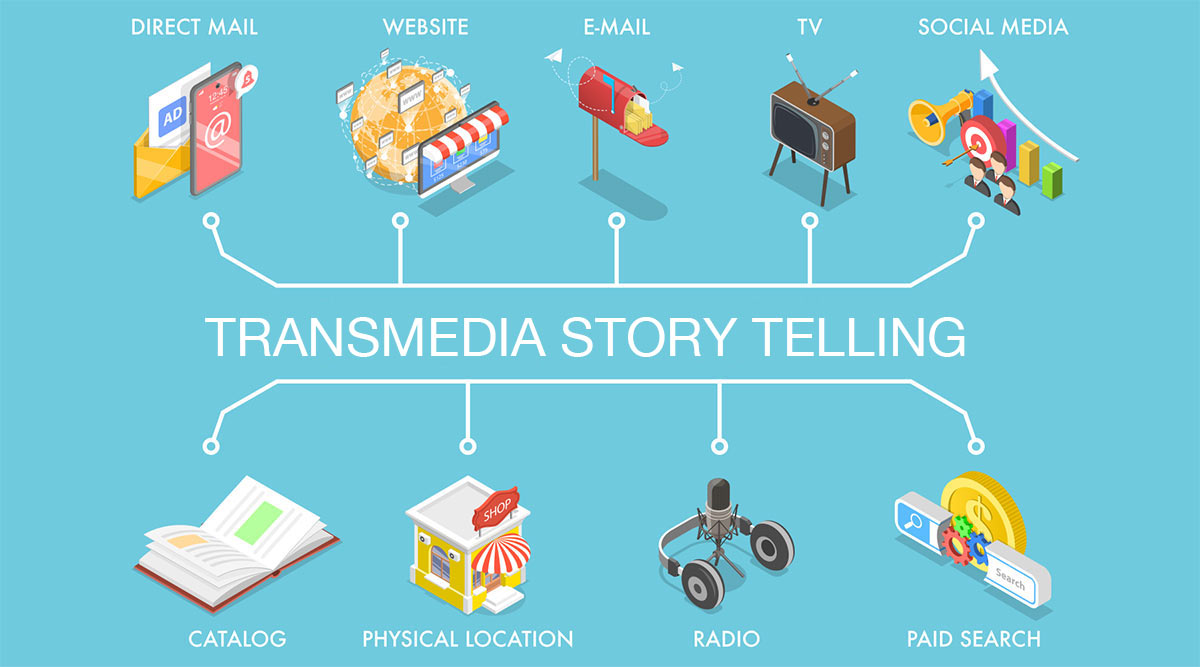In today’s marketing world, where customers are always online, it is important to provide a seamless experience for customers in a way that is most convenient for them at the time. In the past, it was common to distinguish between channels and implement measures for each media. However, distinguishing between channels is for the convenience of the company and has no meaning to the customer. The key to success in marketing in the future is how to integrate channels and provide unique experiences and value. In this article, we would like to deepen your understanding of one of the key concepts in designing customer experiences: transmedia storytelling.
What is transmedia storytelling?

Transmedia storytelling is a content delivery method that gradually reveals the full story of a certain worldview by developing multiple stories consistent with that worldview in multiple media. By fragmenting information, the goal is to impress customers with the value of the company’s offerings and the attractiveness of its products while skillfully drawing their interest. TMS is an acronym for Transmedia Storytelling.
When incorporating transmedia storytelling, customers are exposed to a variety of media and gradually acquire information. The story is completed like a puzzle, with the added elements of participating in the story and taking the time to acquire information, creating a deeper storytelling experience. If it can be successfully deployed according to the characteristics of the media and the behavioral patterns of customers, it can create a more multilayered and three-dimensional narrative than if it is deployed all at once in a single medium.
While media mix and cross-media are other methods of using multiple media, transmedia is fundamentally different from them. While media mix and other methods develop stories and content by distinguishing between media, transmedia does not distinguish between channels in the first place. From the beginning, the entire media is considered as one space, and the brands need to consider which information should be placed in which media to effectively develop their story.
Benefits of incorporating TMS
Draw customers into the world of the story and captivate them.
Transmedia storytelling is a concept that was originally born in the content industry and is based on the idea that information is more interesting when it is fragmented and pieced together bit by bit rather than given all at once.
Movies and games do not give all the information at the beginning. Instead, they give information little by little, sometimes motivating the customer to acquire information on his or her own, so that the story is finally completed. This is because the feeling of having solved a mystery, of having understood what is going on, is a great sense of accomplishment and joy for human beings. If you can successfully pique the curiosity of your customers and draw them further and further into the world of your story, they will become captivated by that world and never want to leave.
Humans by nature live in an uncertain world. Therefore, information acquired by humans is inherently discontinuous, and humans can unconsciously piece together fragmentary information into a coherent narrative. It is also known that actively acquired information is more likely to be retained in the brain than passively acquired information. Transmedia storytelling is an attempt to take advantage of this human nature.
The “Star Wars” and “Marvel” series, which have enthusiastic fans around the world, form a single worldview with stories from various media, including movies, animation, games, and novels. The same is true of the “Damon Slayer” series, which became a hot topic last year. Although the character, Kyojuro Rengoku, was not a prominent figure in the TV anime, the use of admission specials and intensive magazine serialization to expand the worldview has succeeded in deepening our understanding of the character and inducing many emotional responses. Recently, many strategic contents on video distribution services such as Netflix and Disney+ have also adopted this technique.
Using TMS for Marketing
Share the company’s worldview with customers and involve them in the development of the story.
Transmedia storytelling is effective not only in the content industry but also in corporate marketing. In today’s information-oriented and commoditized world, storytelling is required in marketing as well. If you can create a worldview that resonates with customers and provide them with value-added experiences, you can create a deep connection with them.
This widespread awareness has led various companies to launch narrative campaigns, but in most cases, even if they utilize multiple media, they end up sending out the same content. We encourage you to incorporate transmedia storytelling to develop your story more effectively. A major differentiator is to create a narrative with “margins” that allow customers to actively construct their own narrative by adding their own interpretations of information in small pieces. Fragment the story and distribute it across multiple media to better engage the customer’s thoughts and actions. This will create a deeper worldview and increase customer loyalty.

